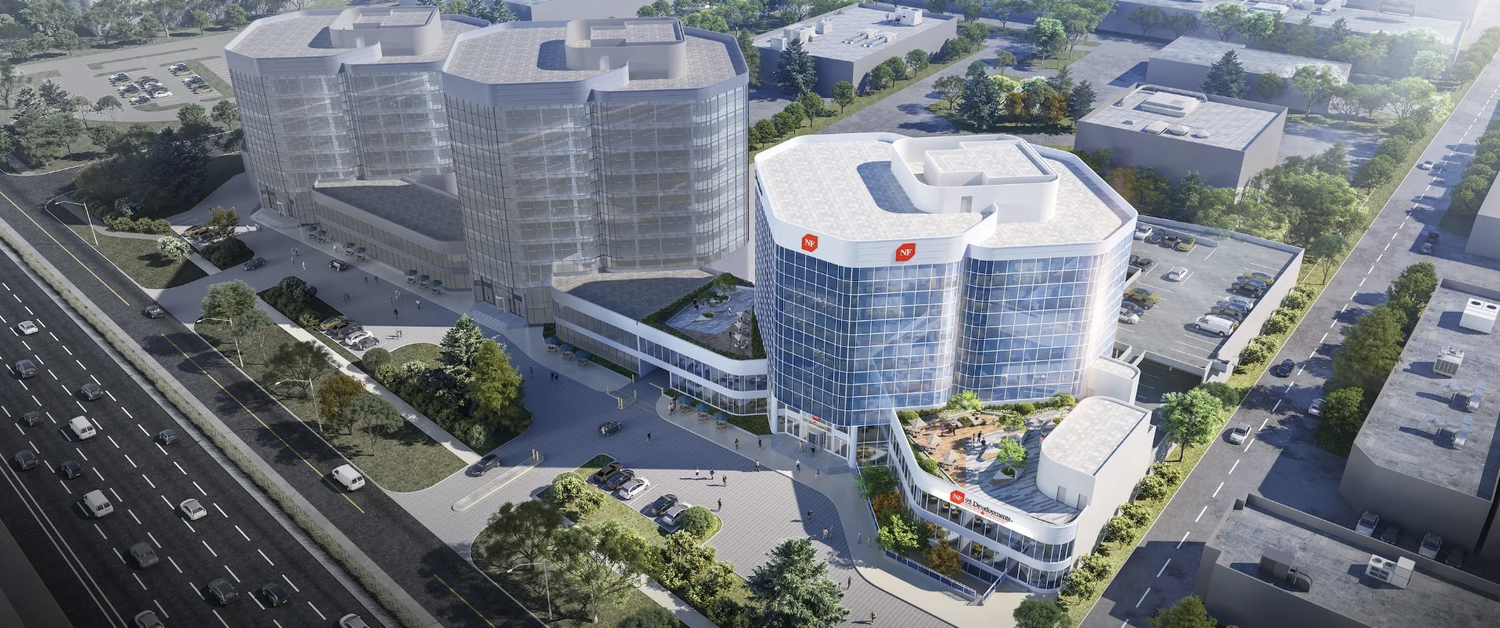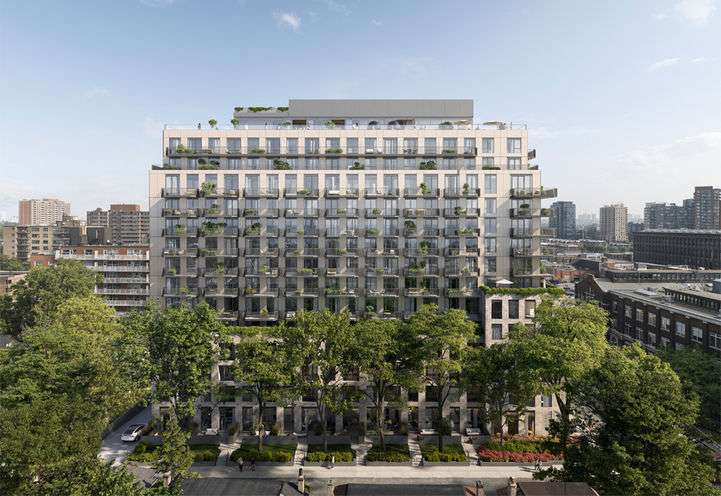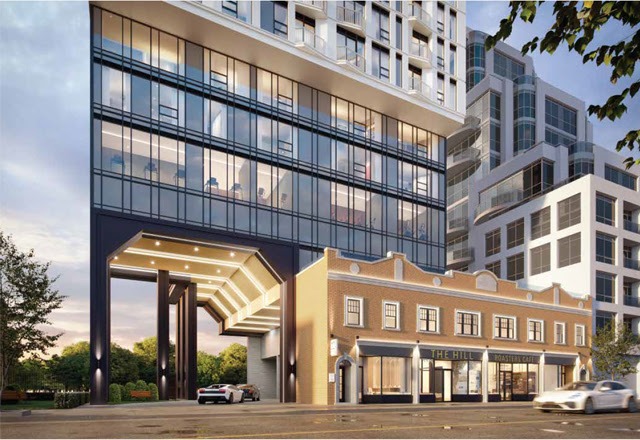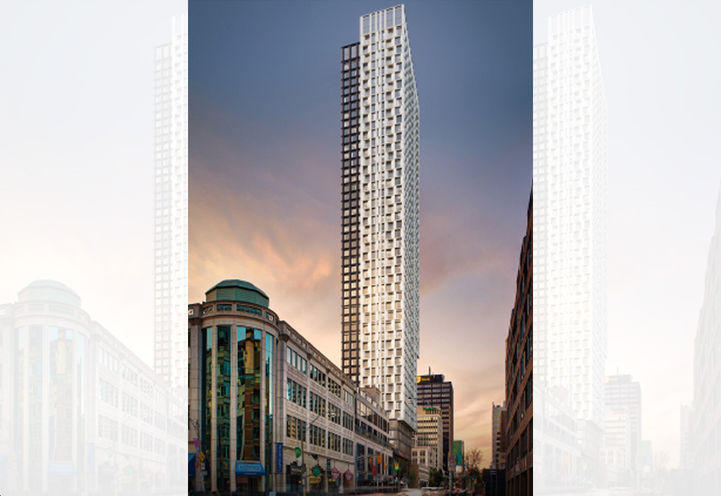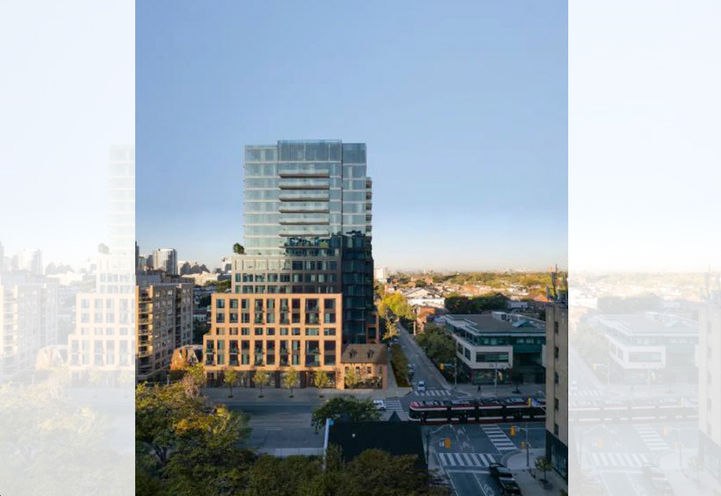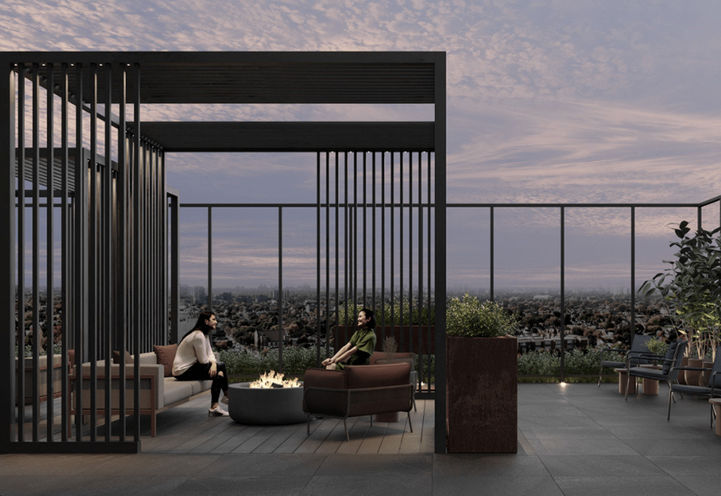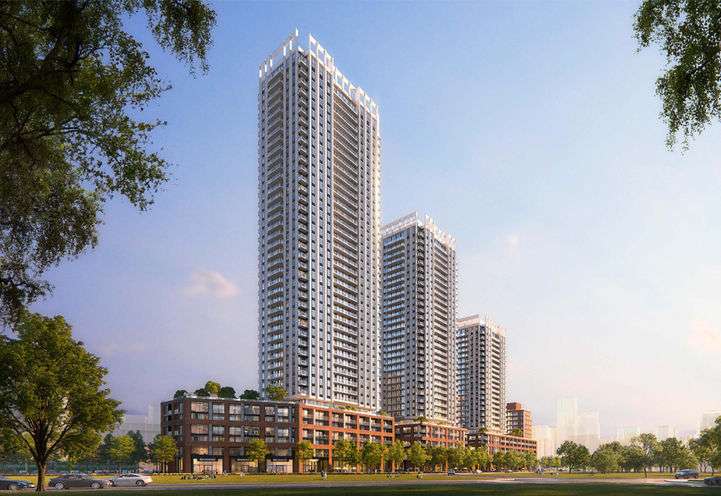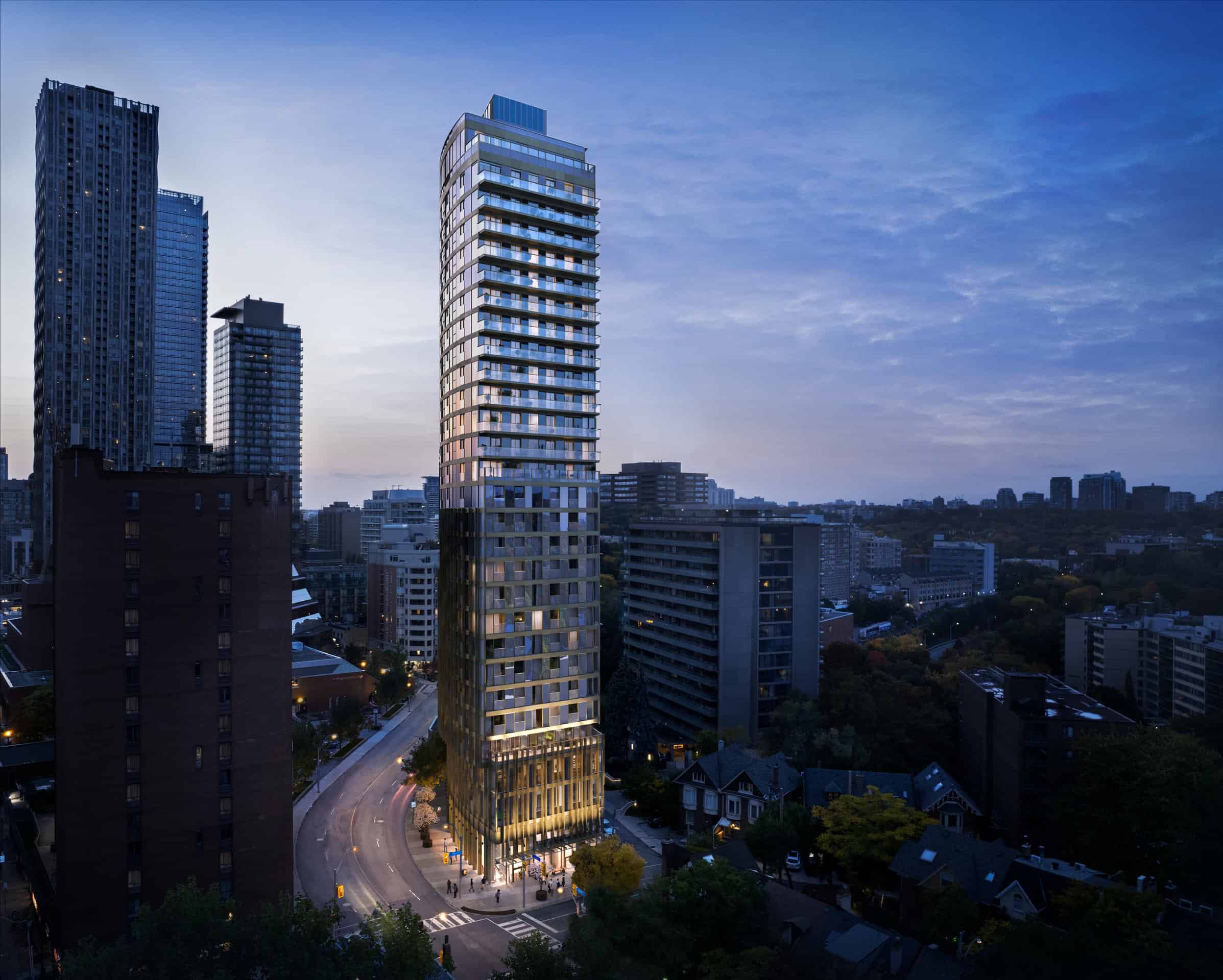Strategic advantages of Yonge Street and St. Clair Avenue, Toronto
Yonge Street and St. Clair Avenue is a vibrant and prestigious neighborhood in Toronto, offering a multitude of highlights and attractions. This area is known for its unique blend of upscale living, cultural richness, and convenience. Here are some key highlights of Yonge Street and St. Clair Avenue:
Prime Real Estate: Yonge and St. Clair is home to some of the most sought-after real estate in Toronto. The area boasts a mix of elegant condominiums and historic residences, making it a prime location for those seeking a luxurious urban lifestyle.
Transit Accessibility: The neighborhood is exceptionally well-connected. St. Clair subway station provides easy access to Toronto’s subway network, ensuring a hassle-free commute for residents. This strategic transit hub makes it an ideal choice for commuters.
Cultural Hub: The area is a cultural hub, hosting numerous art galleries, theaters, and cultural events. For example, the renowned Aga Khan Museum, dedicated to Islamic art, is a short drive away, offering a rich cultural experience.
Fine Dining and Cafes: Residents and visitors can indulge in an array of fine dining options, trendy cafes, and eateries offering diverse cuisines. Notable examples include the elegant Scaramouche Restaurant and the popular Cava Restaurant.
Shopping Paradise: Yonge and St. Clair is a shopping paradise, featuring an assortment of upscale boutiques, including Holt Renfrew, offering high-end fashion and luxury items. Nearby is the well-known Yorkville shopping district, famous for its designer boutiques.
Educational Excellence: Families with children benefit from the presence of prestigious schools such as Upper Canada College and Branksome Hall, which are renowned for their academic excellence.
Green Spaces: Nature enthusiasts can explore nearby green spaces, including David A. Balfour Park, a picturesque urban park with walking trails and a natural ravine, as well as the Rosehill Reservoir Park, offering serene views and recreational activities.
Safety and Security: Yonge and St. Clair is known for its low crime rates, effective policing, and a strong sense of community, ensuring residents’ safety and well-being.
Historic Charm: The area preserves its historic charm with a mix of well-maintained heritage buildings and modern architecture. For example, the Balfour Building, a historic landmark, is an excellent illustration of this unique blend.
Community Engagement: The neighborhood fosters a strong sense of community through local events, art exhibitions, and cultural festivals, providing residents with opportunities to engage and connect.
Property Investment Potential: Investing in real estate in this prestigious neighborhood is an excellent long-term investment. Properties in this area tend to appreciate in value over time, making it a lucrative choice for investors.
Iconic Landmarks: The Imperial Plaza, a historic building transformed into luxury condominiums, stands as an iconic landmark in the area, representing the perfect fusion of the past and the present.
Transporation Options
Yonge Street and St. Clair Avenue in Toronto offer a wide array of transportation options, making it a highly accessible and well-connected hub within the city. Here are detailed informative statements highlighting these transportation options:
Subway Access: The St. Clair subway station, part of Toronto’s Line 1 (Yonge-University), is a central transportation node at Yonge and St. Clair. This underground station provides quick access to downtown Toronto, Yorkville, and beyond. Tourists and commuters alike benefit from this well-connected subway line, with frequent service throughout the day.
Bus Routes: The intersection of Yonge Street and St. Clair Avenue serves as a major transit hub for several bus routes. The TTC (Toronto Transit Commission) operates numerous bus lines in this area, facilitating convenient transportation to various parts of the city. For example, the 512 St. Clair streetcar route offers an east-west connection, making it easy to reach destinations such as Wychwood Barns and Gunn’s Loop.
Streetcar Service: In addition to buses, the area also offers streetcar services. The 512 St. Clair streetcar route connects residents to multiple key neighborhoods, including Forest Hill, Oakwood Village, and Davenport. This service enhances public transit accessibility, allowing residents to explore and commute efficiently.
Bike-Friendly Infrastructure: Yonge and St. Clair is part of Toronto’s effort to promote cycling as an eco-friendly transportation option. There are dedicated bike lanes and bike-sharing stations, such as the Bike Share Toronto network, making it easy for cyclists to traverse the area and access the scenic Beltline Trail.
Pedestrian-Friendly Streets: The intersection is well-designed for pedestrians, offering safe and walkable pathways. With a focus on creating a pedestrian-friendly environment, residents can easily stroll to various amenities, such as cafes, shops, and restaurants.
Car and Ride-Sharing Services: For those who prefer personal vehicles, there are car rental services and ample parking facilities in the area. Furthermore, ride-sharing services like Uber and Lyft are readily available, providing residents with convenient door-to-door transportation.
GO Transit Access: For those seeking regional or commuter transit options, the St. Clair GO station offers connections to GO Transit’s commuter rail and bus services. This is particularly advantageous for individuals living in the area and working in other parts of the Greater Toronto Area.
Future Transportation Plans: Yonge and St. Clair is also a location of interest for future transportation developments. Toronto’s ongoing transit expansion plans may further enhance accessibility in the area, with potential subway extensions and improved transit infrastructure.
Accessibility Services: The intersection is designed to be accessible to all individuals, including those with mobility challenges. Elevators, ramps, and other accessible features are in place at transit stations and public spaces to ensure inclusivity.
Traffic Management: The City of Toronto employs various traffic management systems, including traffic lights, pedestrian crossings, and efficient road maintenance, to ensure smooth traffic flow and pedestrian safety in this bustling neighborhood.
Strategic advantages of Bathurst St. and Richmond
Bathurst Street and Richmond Street West is a strategic and vibrant intersection in the heart of Toronto. The area offers several strategic advantages:
Central Location: This intersection is situated right in the heart of downtown Toronto, making it incredibly convenient. It’s within walking distance of major employment hubs, including the Financial District, the Entertainment District, and the Fashion District. This central location is ideal for professionals working in the core of the city.
Transportation Hub: Bathurst and Richmond is well-connected to Toronto’s transportation network. The 504 King streetcar line runs along King Street, and the 511 Bathurst streetcar is easily accessible, providing convenient public transit options. The proximity to Union Station, Toronto’s central transportation hub, makes it easy to access regional and national rail services.
Cultural and Entertainment Hub: The Entertainment District, known for its theaters, performing arts venues, restaurants, bars, and nightclubs, is just a stone’s throw away. This means residents can enjoy a lively atmosphere with a myriad of entertainment options.
Dining and Shopping: The neighborhood is teeming with dining options, from trendy restaurants to cozy cafes. Nearby, Queen Street West offers a wide range of shops, boutiques, and retailers, making it a shopping paradise.
Recreational Opportunities: Bathurst and Richmond is in close proximity to parks and recreational spaces. For example, Stanley Park and Trinity Bellwoods Park are just a short walk away, providing green spaces for outdoor activities and relaxation.
Arts and Culture: The area is known for its arts and culture scene, with galleries, theaters, and cultural events. The Museum of Contemporary Canadian Art (MOCCA) is located nearby, offering a cultural haven for art enthusiasts.
Diverse Housing Options: Bathurst and Richmond offers diverse housing options, from modern condominiums to historic lofts. This range caters to a variety of preferences and lifestyles, making it attractive to a diverse demographic of residents.
Educational Institutions: Educational institutions like Ryerson University and the University of Toronto are within reach, making it a strategic location for students and academics.
Walkability: The neighborhood is highly walkable, and it boasts a high Walk Score, making it easy for residents to run daily errands without the need for a car.
In summary, Bathurst Street and Richmond Street West is strategically located in the core of Toronto, offering residents a central location with excellent transportation links, an abundance of entertainment and dining options, and a diverse range of housing choices. Its proximity to cultural and recreational hubs makes it a dynamic and appealing place to live, work, and explore the vibrant city of Toronto.
Transportation Options
Bathurst St & Richmond St W is a vibrant and centrally located neighborhood in Toronto, and it offers an array of transportation options that make it an attractive and accessible place to live and work. From public transit to pedestrian-friendly streets, here are detailed statements with SEO in mind about the transportation options in this area:
1. Public Transit Accessibility:
- Bathurst St & Richmond St W enjoys excellent access to Toronto’s public transit system, making it a breeze to navigate the city. The 511 Bathurst streetcar and 501 Queen streetcar routes are within walking distance, ensuring convenient connections to key destinations across the city.
2. Streetcar Convenience:
- The 511 Bathurst and 501 Queen streetcar routes are major arteries of the Toronto Transit Commission (TTC). For those living and working in the Bathurst St & Richmond St W area, these streetcars offer a quick and efficient mode of transportation. For example, you can easily hop on the 501 Queen streetcar and head east to Toronto’s Financial District, or west to explore the thriving Queen Street West district.
3. Bike-Friendly Infrastructure:
- The neighborhood is known for its bike-friendly infrastructure, with dedicated bike lanes and bike-sharing programs. For instance, the Bathurst Street bike lanes provide a safe and convenient way for cyclists to travel through the area. This promotes eco-friendly commuting options and supports a healthy and active lifestyle.
4. Walkability and Pedestrian-Friendly Streets:
- Bathurst St & Richmond St W is renowned for its walkability, with a myriad of shops, restaurants, and cultural attractions within a short stroll. The ability to run errands or enjoy a leisurely walk without the need for a car is a significant advantage. For instance, residents can take a pleasant walk to nearby landmarks like the Art Gallery of Ontario.
5. Nearby Major Highways:
- This location provides easy access to major highways, including the Gardiner Expressway and the Don Valley Parkway. This is especially advantageous for commuters who need to access different parts of the city or make trips outside Toronto.
6. Ride-Sharing Services:
- Bathurst St & Richmond St W is well-served by ride-sharing services such as Uber and Lyft, providing convenient transportation options at your fingertips. Whether it’s for a quick ride downtown or to explore Toronto’s cultural scene, these services are readily available.
7. Proximity to Union Station:
- Union Station, one of Toronto’s main transportation hubs, is a short distance away. This transit hub connects various regional and national rail services, including Via Rail and GO Transit, providing easy access to areas outside of Toronto. It’s also the primary terminal for the UP Express train to Pearson International Airport, enhancing connectivity for travelers.
8. Car-Sharing Programs:
- Car-sharing services like Zipcar are popular in this area, providing residents with the flexibility to access a vehicle when needed without the responsibility of ownership. This is particularly useful for occasional drivers or those looking for a convenient way to run errands.
By incorporating these detailed and SEO-friendly statements about transportation options in Bathurst St & Richmond St W, individuals seeking information about the area can gain a comprehensive understanding of the accessible and convenient ways to get around the neighborhood and beyond.
Highlights of the area
Nestled in the vibrant Bathurst Street and Richmond Street West area, you’ll discover a neighborhood teeming with excitement and convenience. Here’s a comprehensive exploration of the highlights of this dynamic district, enhanced for search engine optimization:
1. Artistic Hub: Bathurst and Richmond is known for its thriving artistic scene. The area houses numerous art galleries and studios where you can immerse yourself in a world of creativity. For instance, the Graffik Gallery showcases an array of contemporary urban art, while the Stephen Bulger Gallery specializes in fine art photography.
2. Entertainment Extravaganza: Entertainment options abound in this neighborhood. Iconic venues like the Theatre Passe Muraille host groundbreaking theater productions, while the nearby Factory Theatre is a hub for Canadian plays and cultural events.
3. Culinary Delights: Food enthusiasts will find a haven of culinary experiences. The area boasts a diverse range of eateries. For example, Lee Restaurant, led by celebrity chef Susur Lee, offers a fusion of Asian and French cuisine, while Portland Variety is a cozy bistro known for its farm-to-table menu.
4. Trendy Cafes: The neighborhood is dotted with charming cafes where you can savor artisanal coffee and delectable pastries. Notable spots include Jimmy’s Coffee, a local favorite known for its friendly ambiance, and Fahrenheit Coffee, a specialty coffee shop that takes pride in its brewing techniques.
5. Nightlife Oasis: Bathurst and Richmond comes alive after dark with its vibrant nightlife. The Horseshoe Tavern is a legendary live music venue where you can catch emerging and established artists. For those who prefer a more relaxed ambiance, The Fifth Social Club offers a stylish rooftop bar with stunning views of the city.
6. Urban Greenery: Amidst the urban hustle and bustle, you’ll find pockets of greenery. St. Andrew’s Playground is a welcoming park where you can enjoy a leisurely stroll or a peaceful moment in the heart of the city.
7. Accessibility: This area boasts excellent transportation links. The nearby St. Andrew Subway Station ensures easy access to the city’s subway network. The Gardiner Expressway and King Street Streetcar route are also conveniently close, allowing for efficient commuting throughout the city.
8. Architectural Charm: The streets of Bathurst and Richmond are adorned with historic and modern architecture. From classic Victorian buildings to sleek, contemporary designs, the neighborhood offers a rich tapestry of architectural styles.
9. Cultural Festivals: The neighborhood hosts various cultural festivals and events throughout the year. The annual Toronto International Film Festival (TIFF) brings international stars and movie premieres to the area, creating a buzz of excitement.
In conclusion, the Bathurst Street and Richmond Street West area is a captivating blend of art, entertainment, culinary delights, and cultural experiences. Its rich diversity and vibrant atmosphere make it a desirable location for residents and visitors alike, ensuring there’s always something to explore and enjoy in this dynamic Toronto district.
Strategic Advantages of Broadview Avenue in Downtown Toronto
Broadview Avenue in Toronto offers several strategic advantages that make it an appealing location:
Proximity to Downtown: Broadview Avenue is relatively close to the downtown core, allowing for quick and convenient access to the heart of Toronto. This proximity is advantageous for both commuters and those who enjoy the city’s entertainment, dining, and cultural attractions.
Public Transit Access: The presence of multiple transit routes along Broadview Avenue enhances accessibility. It’s a transit-friendly location, ensuring that residents have reliable options for commuting and exploring the city without the need for a car.
Direct Connection to Major Highways: Broadview Avenue intersects with the Don Valley Parkway (DVP), a significant artery in Toronto’s road network. This means that residents have easy access to the DVP, facilitating efficient travel to various parts of the Greater Toronto Area (GTA).
Scenic Views and Parks: The avenue offers picturesque views of the Don River and the surrounding green spaces. For nature enthusiasts, this is a valuable advantage, providing opportunities for outdoor activities, jogging, and relaxation along the riverbanks and in nearby parks.
Cultural and Historical Significance: Broadview Avenue has historical significance in Toronto. It’s home to various heritage sites and landmarks, contributing to the neighborhood’s unique character. These cultural elements add depth to the area’s appeal.
Diverse Housing Options: The area surrounding Broadview Avenue features a mix of housing options, from traditional single-family homes to modern condominium developments. This diversity attracts a wide range of residents, accommodating different lifestyles and preferences.
Local Amenities: Broadview Avenue offers proximity to essential amenities such as schools, healthcare facilities, shopping centers, and recreational opportunities. Residents have easy access to the services they need for daily living.
Community Spirit: The avenue is part of vibrant neighborhoods known for their strong sense of community. Residents often engage in local events, activities, and initiatives, fostering a welcoming and inclusive atmosphere.
Investment Potential: The combination of accessibility, cultural significance, and diverse housing options can make Broadview Avenue an attractive location for real estate investment. Properties in this area have the potential for appreciation in value.
Future Development: Broadview Avenue and its surrounding neighborhoods may see continued development and revitalization, further enhancing the quality of life and investment potential in the area.
In summary, Broadview Avenue offers strategic advantages like proximity to downtown, excellent transportation options, beautiful natural surroundings, historical charm, and a diverse range of housing options. These factors collectively contribute to its desirability as a place to live and invest in Toronto.
Strategic Advantages of Bloor St W & Kipling Ave in Etobicoke/ Toronto
Bloor St W & Kipling Ave in Toronto is strategically advantageous for several reasons, making it a highly sought-after location for both residents and businesses. Here’s a detailed look at its strategic advantages:
1. Transportation Hub:
- The intersection serves as a transportation hub, with Kipling Station, Kipling Bus Terminal, and Kipling GO Station nearby. This offers residents and commuters easy access to various transit options, including the TTC subway system, GO Transit for regional travel, and major bus routes. Such connectivity reduces commuting times and increases accessibility.
2. Proximity to Major Highways:
- Bloor St W & Kipling Ave provides quick access to major highways, including Highway 427 and the Gardiner Expressway. This facilitates convenient travel to different parts of Toronto and the Greater Toronto Area (GTA), making it an ideal location for those who need to commute to work or explore the region.
3. Educational Institutions:
- The area is home to several educational institutions, including Kipling Collegiate Institute, offering quality education for students of various ages. Proximity to schools and colleges can be a crucial factor for families when choosing a place to live.
4. Commercial and Retail Services:
- The intersection is surrounded by a variety of commercial and retail services. The Cloverdale Mall is just a short drive away, offering a diverse range of shopping and dining options. Major retailers, including IKEA and Costco, are within proximity, making daily shopping and errands convenient.
5. Employment Centers:
- Bloor St W & Kipling Ave is well-connected to various employment centers in Toronto, including the Financial District and Hospital Row. The strategic location allows for a reasonable commute for professionals working in these hubs.
6. Growing Neighborhood:
- The area has seen significant development and revitalization efforts, resulting in a growing and vibrant neighborhood. This includes new residential developments, improved infrastructure, and increased cultural and recreational amenities.
7. Diverse Housing Options:
- Bloor St W & Kipling Ave offers a diverse range of housing options, from condominiums to single-family homes. This diversity caters to a wide spectrum of residents, from young professionals to families, creating a rich and dynamic community.
8. Green Spaces:
- Nearby parks and green spaces, such as Tom Riley Park and Mimico Creek, provide recreational opportunities and add to the quality of life for residents. The proximity to the waterfront and waterfront trails is an additional advantage for nature enthusiasts.
9. Mixed-Use Development:
- The area has seen mixed-use developments, combining residential, retail, and commercial spaces. This creates a sense of community and provides easy access to essential services and amenities.
10. Investment Potential:
- With its strategic location and ongoing developments, Bloor St W & Kipling Ave holds significant investment potential. Real estate investors may find this area attractive due to its growth prospects and connectivity.
In summary, Bloor St W & Kipling Ave in Toronto stands out as a strategically advantageous location due to its transportation connectivity, proximity to major highways, educational institutions, employment centers, and a growing community. These advantages make it a desirable and dynamic area for residents and businesses alike.
Transportation Options
Transportation accessibility in the area of Bloor St W & Kipling Ave in Toronto is excellent, making it a convenient and well-connected location for residents and commuters. Here’s a detailed overview of the transportation options and access in the area:
1. Kipling Station:
- Kipling Station is a major transportation hub located in close proximity to Bloor St W & Kipling Ave. It is part of the Toronto Transit Commission’s (TTC) subway system, serving Line 2 (Bloor-Danforth) and Line 3 (Scarborough) subway routes. Commuters can easily access the subway network, providing a swift and reliable way to travel within Toronto.
2. Kipling Bus Terminal:
- Adjacent to Kipling Station is the Kipling Bus Terminal. It serves as a key transfer point for various bus routes, allowing residents to access a comprehensive network of TTC bus services. This makes it convenient to reach different neighborhoods in Toronto.
3. Kipling GO Station:
- Kipling GO Station, operated by GO Transit, provides regional train services. Commuters can access GO Transit’s train routes, which connect Toronto to the broader Greater Toronto Area (GTA), making it easier to reach destinations beyond the city.
4. Major Highways:
- Bloor St W & Kipling Ave enjoys proximity to major highways, including Highway 427 and the Gardiner Expressway. These highways offer residents a quick and efficient means of traveling to various parts of Toronto and the GTA. This is especially advantageous for those who commute to work or frequently drive within the region.
5. Bus Routes:
- The area is well-served by numerous TTC bus routes, providing comprehensive coverage and flexibility for local travel. This extensive network allows residents to navigate the neighborhood and connect to the larger city conveniently.
6. Cycling and Pedestrian Paths:
- Bloor St W & Kipling Ave also features cycling lanes and pedestrian pathways, promoting active transportation. Cyclists and pedestrians can enjoy safe and accessible routes for recreational activities or commuting.
7. Union Station Connection:
- Union Station, one of Toronto’s major transit hubs, is easily accessible from this area. It’s a vital transportation center that connects to various regional and national rail services, including Via Rail and Amtrak. Residents can access Union Station via the TTC network, providing connectivity to different parts of Toronto and beyond.
In summary, Bloor St W & Kipling Ave benefits from a multitude of transportation options, including subway access, bus services, regional train connections, major highways, and active transportation paths. This level of accessibility ensures that residents and commuters have a range of convenient and efficient ways to navigate the neighborhood and the broader Toronto area.
A Few Highlights about the location
Several highlights about the location at Bloor St W & Kipling Ave in Toronto include:
Transportation Hub: The intersection is a transportation hub, offering easy access to Kipling Station, Kipling Bus Terminal, and Kipling GO Station. Residents have multiple transit options, including subway, bus, and regional commuter rail services.
Proximity to Major Highways: Bloor St W & Kipling Ave is conveniently connected to major highways, particularly Highway 427 and the Gardiner Expressway, simplifying commutes within Toronto and the Greater Toronto Area (GTA).
Diverse Housing Options: The area offers a range of housing options, from modern condominiums to single-family homes. This diversity accommodates various lifestyles and preferences.
Educational Institutions: Families have access to quality education with the presence of schools, colleges, and educational institutions in the vicinity.
Green Spaces: Nearby parks, such as Tom Riley Park and Mimico Creek, provide opportunities for outdoor activities and recreational enjoyment. The waterfront and waterfront trails are also easily accessible for nature enthusiasts.
Commercial and Retail Services: The intersection is surrounded by an array of commercial and retail services, including shopping centers like Cloverdale Mall, IKEA, and Costco. This ensures convenient access to shopping and dining options.
Employment Centers: Bloor St W & Kipling Ave is strategically located near downtown employment hubs, including the Financial District, making it practical for professionals and city workers.
Cultural Attractions: The area features a growing cultural scene, with art galleries, theaters, and cultural events catering to various tastes. This provides residents with opportunities to engage in cultural experiences and entertainment.
Connected Community: The mixed-use developments in the area create a sense of community, offering residents easy access to essential services and amenities. This contributes to a vibrant and interconnected neighborhood.
Investment Potential: Due to its strategic location, ongoing developments, and accessibility, Bloor St W & Kipling Ave holds significant investment potential, attracting real estate investors looking for growth and returns.
These highlights collectively make Bloor St W & Kipling Ave a desirable and well-rounded location for both residents and investors. Its accessibility, amenities, and diverse offerings contribute to the neighborhood’s appeal.
Strategic Advantages of Harbourfront Neighborhood in Toronto
The Harbourfront neighborhood in Toronto offers a wealth of strategic advantages that make it a highly sought-after place to live, work, and play. Here are some detailed advantages with examples:
Waterfront Living: The most prominent advantage of the Harbourfront is its waterfront location. Residents enjoy stunning views of Lake Ontario, the Toronto Islands, and the ever-changing lakefront landscape. This proximity to the water provides not only natural beauty but also recreational opportunities. For example, Sugar Beach is a popular waterfront park in the area where residents can relax in the sun, enjoy picnics, and even take part in various community events.
Cultural Attractions: The Harbourfront is home to numerous cultural attractions, including the Harbourfront Centre, which hosts a wide range of arts and cultural events. For instance, the centre hosts concerts, art exhibitions, dance performances, and even film screenings, making it a cultural hub for both residents and visitors.
Dining and Entertainment: The neighborhood boasts a diverse culinary scene with restaurants, cafes, and bars offering a wide range of international cuisines. An example is the Amsterdam Brewhouse, a popular waterfront brewery and restaurant where residents can savor craft beers and delicious meals while enjoying unobstructed lakefront views.
Recreation: The Harbourfront is a haven for outdoor enthusiasts. Residents can take advantage of various recreational activities, from cycling along the Martin Goodman Trail to sailing and kayaking. The Toronto Islands, a short ferry ride away, provide even more opportunities for picnicking, swimming, and exploring.
Accessibility: The neighborhood is well-connected to the rest of the city, offering easy access to public transportation. Union Station, one of Toronto’s primary transit hubs, is nearby, allowing residents to access regional and national rail services, GO Transit, and the Toronto Transit Commission (TTC) subway system.
Employment Opportunities: Proximity to downtown Toronto means residents have easy access to major employment centers, including the Financial District, which houses numerous corporate offices, and Hospital Row, home to several healthcare institutions. An example of a prominent employer is Scotiabank, with its corporate offices located nearby.
Education: For students and academics, the Harbourfront neighborhood is conveniently located near educational institutions such as George Brown College and OCAD University (Ontario College of Art and Design University). These institutions offer diverse educational opportunities and contribute to the neighborhood’s vibrancy.
Path Connectivity: The PATH, Toronto’s underground pedestrian walkway system, is accessible from the Harbourfront. This interconnected network facilitates all-weather access to various office buildings, retail, and dining options. For instance, residents can easily access food courts and shopping centers like the Toronto-Dominion Centre via the PATH.
Shopping: Square One Shopping Centre, one of Canada’s largest malls, is just a short drive away, offering a vast selection of retail outlets. Additionally, Queens Quay Terminal, located in the Harbourfront, is a unique shopping destination with boutique stores and specialty shops.
Community Events: The neighborhood hosts a myriad of community events and festivals. For instance, the Redpath Waterfront Festival is an annual event featuring impressive tall ships, live music, and a dazzling fireworks display. Such events contribute to a sense of community and excitement in the area.
In summary, the Harbourfront neighborhood offers a mix of natural beauty, cultural vibrancy, dining and entertainment options, accessibility to employment hubs, education, and recreational activities. These strategic advantages make it a prime location for those seeking a diverse and dynamic urban lifestyle.

Neighborhood areas around the Harbourfront
Within a 5-mile radius around Harbourfront, Toronto, a variety of neighborhoods offer distinctive atmospheres and amenities. Here’s an overview of some notable neighborhoods in this vicinity:
CityPlace:
- A neighborhood characterized by modern high-rises with a concentration of condominiums.
- Offers a blend of residential, retail, and recreational spaces for a contemporary urban lifestyle.
King West Village:
- A trendy district renowned for its restaurants, bars, boutiques, and art galleries.
- A hub for entertainment and vibrant nightlife, making it a go-to destination for those seeking entertainment options.
Fort York:
- An area steeped in history, featuring the Fort York National Historic Site.
- Preserves Toronto’s military heritage and provides insight into its rich past.
Entertainment District:
- Home to theaters, performing arts venues, restaurants, bars, and nightclubs.
- An exciting and bustling area that offers a wide array of entertainment options.
Waterfront Communities – The Island:
- Encompasses parts of the Toronto Islands and offers a blend of residential spaces, parks, and recreational activities.
- Residents can enjoy a serene island atmosphere within reach of the city.
Queen’s Quay:
- The central street along the waterfront, boasting parks, shops, restaurants, and cultural attractions.
- A picturesque location offering leisurely strolls and access to various amenities.
Liberty Village:
- Distinguished by its converted industrial spaces turned into lofts, offices, and trendy eateries.
- A vibrant urban atmosphere with a mix of work and play in a unique setting.
Bathurst Quay:
- Adjacent to the waterfront and home to ferry terminals to the Toronto Islands and Billy Bishop Airport.
- A pivotal location for island access and air travel.
Niagara:
- A versatile neighborhood featuring a mix of residential, commercial, and cultural spaces.
- Offers a diverse urban experience with a range of amenities and activities.
Alexandra Park:
- A multicultural neighborhood celebrated for its historic row houses, diverse culinary offerings, and dynamic street art.
- A vibrant and colorful community reflecting Toronto’s cultural diversity.
Trinity – Bellwoods:
- Renowned for the scenic Trinity Bellwoods Park, adorned with hip cafes, trendy boutiques, and an artsy, youthful vibe.
- A hub for outdoor activities and artistic expression.
Kensington Market:
- A bohemian and eclectic neighborhood featuring unique shops, multicultural eateries, and a thriving artistic community.
- A cultural melting pot with a distinctive and vibrant atmosphere.
These neighborhoods provide a tapestry of experiences, ensuring that residents in the Harbourfront vicinity have access to a wide range of lifestyles, from urban chic to historical charm, and everything in between.
The last lot in the Harbourfront area
Recently, the developer, Lifetime Developments which has created over 16,000 suites in the past 10 years, launched the new pre construction condominium in the 200 Queens Quay as the last lot in the Harbourfront area.
The Q Tower at 200 Queens Quay in Toronto’s Harbourfront is more than just a condominium development; it’s a gateway to an exceptional urban lifestyle. Here’s what makes this location truly outstanding:
1. Waterfront Living: One of the most compelling features of Q Tower is its waterfront location. Situated along the shores of Lake Ontario, residents are treated to awe-inspiring views of the glistening waters and the charming Toronto Islands. The waterfront living experience brings a sense of tranquility and natural beauty to urban life.
2. Luxurious Residences: Q Tower offers a selection of high-end condominium residences that embody luxury and sophistication. Modern features and elegant finishes adorn these units, ensuring that residents experience the epitome of comfort and style.
3. Diverse Amenities: Q Tower goes above and beyond to provide residents with a lavish lifestyle. From a well-equipped fitness center and a swimming pool to a rooftop terrace and inviting lounge areas, these amenities make everyday living feel like a retreat.
4. Accessibility: The strategic location of Q Tower ensures easy accessibility to various transit options. Residents can seamlessly navigate Toronto and its surroundings, making daily commutes and weekend getaways convenient and stress-free.
5. Harbourfront Attractions: The Harbourfront neighborhood is renowned for its vibrant cultural scene. Q Tower residents have a world of attractions at their doorstep, including the Harbourfront Centre, Sugar Beach, the Toronto Islands, entertainment venues, and an eclectic mix of dining and shopping options. The neighborhood is alive with culture and excitement.
6. Transit Convenience: With a perfect Transit Score of 100/100, Q Tower provides residents with easy access to TTC streetcar and bus routes. Union Station, a pivotal transit hub, is a mere 10-minute walk away, offering swift connections to Toronto’s diverse neighborhoods and beyond.
7. Proximity to Key Hubs: Q Tower’s location is ideal for professionals and students alike. Major downtown employment hubs, including the Financial District and Hospital Row, are just minutes away by transit. Esteemed post-secondary institutions like OCAD and Ryerson University are also easily accessible.
8. Connection to PATH System: The integration with Toronto’s extensive PATH system adds an extra layer of convenience. This 30-kilometer underground pathway connects to shopping and dining options, allowing residents to explore the neighborhood and access downtown core employment hubs with ease.
Q Tower at 200 Queens Quay is more than a place to live; it’s a gateway to a lifestyle of luxury, culture, and convenience. It’s where you can savor the tranquility of waterfront living while remaining deeply connected to the vibrant heart of Toronto.
Daily Newsletter
Get all the top stories from Blogs
to keep track.
Prime Real Estate: The Top Areas to Consider for Investment Properties
When considering areas for investment properties, it’s essential to evaluate several factors, such as location, market trends, demand, and potential for appreciation. While Etobicoke offers a central location with an easy commute to downtown Toronto, there are other desirable areas for commuters to explore as well. Here are some suggestions, along with explanations and examples:
Etobicoke, Toronto:
- Location: Etobicoke is a western district of Toronto, known for its mix of residential neighborhoods, waterfront areas, and green spaces.
- Reasons to Consider: Etobicoke’s proximity to downtown Toronto, including access to highways and public transportation, makes it an attractive option for commuters. It offers a wide range of housing options, from condos to single-family homes. The Humber Bay Shores area, for instance, has seen substantial development and has become a popular choice for investors due to its waterfront views and easy access to downtown.
North York, Toronto:
- Location: Located in the northern part of Toronto, North York is a diverse and bustling district with a mix of residential and commercial areas.
- Reasons to Consider: North York provides excellent access to public transit, including the subway system, making it a convenient choice for commuters. Areas like Yonge and Sheppard have seen significant condominium development, attracting both young professionals and families. This can lead to steady rental demand.
Scarborough, Toronto:
- Location: Situated in the eastern part of Toronto, Scarborough offers a mix of suburban and urban living.
- Reasons to Consider: Scarborough is well-connected to downtown Toronto via transit, with the Bloor-Danforth subway line and GO Transit options. The Scarborough Town Centre area has seen increased condominium development and is a hub for shopping and employment, making it a potential investment hotspot.
Mississauga:
- Location: Located to the west of Toronto, Mississauga is one of the largest and fastest-growing cities in the GTA.
- Reasons to Consider: Mississauga offers an easy commute to downtown Toronto via GO Transit and major highways. Areas around Square One Shopping Centre have experienced growth in condominium developments, attracting a diverse population and creating a competitive rental market.
Brampton:
- Location: Brampton is situated in the northwest of Toronto and is known for its family-friendly communities.
- Reasons to Consider: Brampton provides GO Transit connections to downtown Toronto and has a mix of housing options, including single-family homes and townhouses. Investors may find opportunities in areas like Mount Pleasant, which offers accessibility and future potential for development.
Oakville:
- Location: Oakville, located to the west of Toronto, is known for its affluent neighborhoods and waterfront properties.
- Reasons to Consider: While Oakville may be pricier, it offers a suburban lifestyle with access to GO Transit and major highways. Areas around the Oakville GO station and Kerr Village have attracted attention from investors due to their accessibility and urban amenities.
Remember that while proximity to downtown Toronto is a significant factor for commuters, it’s also essential to consider local market conditions, potential rental income, and your long-term investment goals. Conduct thorough research, work with a local real estate agent, and consider factors like infrastructure development and job opportunities when making your investment decision. Diversifying your property portfolio across different neighborhoods in the Greater Toronto Area can also help manage risk and increase your chances of success as an investor.
Daily Newsletter
Get all the top stories from Blogs
to keep track.
Strategic Advantages of Rosedale-Moore Park Neighborhood
Rosedale-Moore Park is a fantastic place to live in Toronto. It’s famous for its beautiful houses and condos. The streets are lined with lots of trees, and there are stunning homes all around. You can also find many lovely parks and green areas to explore, like the Evergreen Brickworks. People in Rosedale-Moore Park enjoy a quieter and family-friendly life compared to those living in downtown Toronto. It’s a great place for families and pets, with lots of peaceful streets and trails near the woods. Plus, it’s just a short walk to Yonge Street for shopping, or you can head to nearby Summerhill for cafes, restaurants, and a grocery market.
One of the best things about this place is the outdoor spots. You can go for walks along creeks, through ravines, and into valleys. Chorley Park, Rosedale Park, and David A. Balfour Park are just a few places to explore with your family, friends, or pets. Many folks here take up jogging, cycling, and hiking to enjoy the beautiful scenery. Besides all the parkland, there’s also the big Mount Pleasant Cemetery grounds, which are perfect for a peaceful stroll. Very few areas in the city have so much untouched nature so close to home.
In Rosedale-Moore Park, you’ll find a mix of working-age professionals, retirees, and a good number of teenagers and young adults.
The Brickworks hosts events all year, but the Saturday Farmer’s Market is a weekly tradition. We explore the trails, then get some fresh produce for lunch!”
A great thing is that the Rosedale subway station is within walking distance. Buses run on many streets in the neighborhood and connect to both Rosedale and Sherbourne subway stations. If you drive, the Don Valley Parkway is nearby. There are schools around, including Gradale Academy, Rosedale Jr. Public School, and Whitney Jr. Public School. You can walk to Summerhill Market, a food lover’s dream with delicious organic and specialty groceries.
However, This isn’t the place for budget-friendly housing. Rosedale-Moore Park is one of Toronto’s pricier areas. Also, since it’s a residential neighborhood, you won’t find a bustling nightlife scene.
A day in the life: Start your morning on your terrace, looking at the historic church down the street. Walk over to Summerhill Market for a yummy organic muffin platter. Take your treats to Chorley Park and meet your friends for a walk under the trees. Go shoe shopping in nearby Yorkville and have a fancy lunch at El Tenedor Wine Bar. Spend the evening at the Brickworks, where they’re showing a movie. Grab dinner at Cafe Belong, which is inside the Brickworks grounds. Then walk home through the park and have a nightcap on your condo terrace where your day began.
In summary: Rosedale-Moore Park is a beautiful neighborhood with luxurious homes and lots of green spaces to enjoy.
Toronto Waterfront neighborhoods
The Charming Toronto Waterfront neighborhoods
Waterfront Communities, often referred to as the Island Neighborhood, is a highly sought-after district within Toronto’s housing market. It seamlessly blends lakeside living with urban sophistication. This charming enclave caters to a diverse range of interests and lifestyles. Whether you’re a food enthusiast, a shopaholic, a music lover, or an outdoor aficionado, there’s something here for everyone. If you desire to reside at the heart of a vibrant community while also having access to some of the city’s most beautiful parkland, this is the ideal place to call home.
The Toronto Waterfront Communities neighborhood is bordered by Bathurst Street to the west, the Don River to the east, Queen’s Quay to the south, and Front Street to the north. In the 1800s, this area was once a landfill, eventually transforming into an industrial hub along the shoreline. However, since 1972, a wave of urban renewal has steadily replaced industrial landscapes with luxurious lakeside living in Toronto.
Currently, the Toronto Waterfront Communities is undergoing one of the most extensive urban redevelopment projects, spanning approximately 2,000 acres. Towering mid to high-rise condos continue to emerge, many of which offer breathtaking, unobstructed views of Lake Ontario. The community also boasts some of the city’s most innovative public spaces, cultural centers, and a calendar filled with exciting events. Situated just steps from Toronto’s Financial District and downtown core, this lakeside community offers picturesque views in every direction. The completion of the 800-meter track along Queens Quay in 2000, from Spadina Avenue to Bathurst Street, has made this area even more convenient and accessible.
Waterfront Communities enjoys an ideal location with easy access to the Gardiner Expressway, which quickly connects to the Don Valley Parkway. Being moments away from the bustling downtown core means you’re immersed in high-end shopping and fine dining experiences. No more worrying about parking hassles when attending a game or concert since you can simply walk to Toronto’s hottest event and performing arts centers, including the Harbourfront Centre, Scotiabank Arena, Rogers Centre, and Meridian Hall. The nearby marinas offer seasonal mooring options for boating enthusiasts, and you’re only steps away from the Toronto Ferry for a trip to the Toronto Islands and the Royal Canadian Yacht Club. Regular bus routes connecting to Union Station make it effortless to hop on the subway or take the GO train to various destinations. Moreover, the new 509 Harbourfront streetcar route, running from Union Station to Exhibition Place, has further improved accessibility. Within walking distance, you’ll find the St. Lawrence Market, where locally grown produce and international culinary delights await. There’s also a Loblaws supermarket on Queen’s Quay for all your essential groceries. A massive new LCBO liquor store is conveniently located across from George Brown’s Waterfront campus, offering a wide selection of top-shelf spirits, wines, and craft beer. In the winter, you can enjoy ice skating at Natrel Rink, while in the summer, you can relax at Sugar Beach or take a stroll along the Waters’ Edge Promenade and Harbourfront Boardwalks year-round. Seasonal events abound, ranging from music festivals and art shows to fitness programs and food festivals. For those with wanderlust, Billy Bishop Airport offers convenient flights for getaways or business trips.
Nestled within Toronto’s vibrant Fashion District, the King and Bathurst station is set to establish crucial connections between the Ontario Line and the well-loved 504 King and 511 Bathurst streetcar routes. The current blueprints include the continuation of streetcar services in these areas throughout the project’s duration, though there may be occasional rerouting or service adjustments to accommodate construction activities.
Beneath the surface, the station platform is cleverly positioned at a diagonal to minimize any significant disruptions to the historic Wheat Sheaf Tavern. This iconic establishment, boasting a distinct mansard roof, has stood since 1849 and is widely recognized as one of Toronto’s oldest pubs.
Waterfront Communities has evolved into a haven for young professionals who are drawn to the vibrant lifestyle, proximity to work, and an abundance of entertainment options, bars, and restaurants. It’s a place where people of all ethnicities and backgrounds coexist harmoniously, making it an inclusive and welcoming community.
The Waterfront Communities is a neighborhood that never sleeps. Whether you’re into sailing, live concerts, fresh produce markets, or simply relishing beautiful sunsets, this community offers an unparalleled quality of life. The views from this neighborhood are truly priceless, providing a constant reminder of the beauty that surrounds you.
What Are the Desirability Factors for a Neighborhood?
The desirability of a neighborhood is influenced by a variety of factors that can vary from one location to another. People have different preferences, so what is considered desirable can differ among individuals. However, there are several common factors that often play a significant role in determining the desirability of a neighborhood:
Location:
The location of a neighborhood is often the most critical factor. Proximity to employment centers, schools, parks, shopping, and public transportation can make a neighborhood more desirable. Easy access to major highways and public transit can also be a significant advantage.
Safety and Security:
Low crime rates and a general feeling of safety are crucial. A safe neighborhood is typically more attractive to families and individuals alike.
Housing Affordability:
Housing costs, including rent or home prices, property taxes, and utility expenses, play a substantial role in a neighborhood’s desirability. Affordability is a top consideration for many homebuyers and renters.
Quality of Schools:
Neighborhoods with high-performing schools tend to be in high demand, as parents often prioritize their children’s education. Access to quality public and private schools can greatly influence a neighborhood’s appeal.
Amenities and Services:
Access to parks, community centers, libraries, healthcare facilities, shopping, dining, and recreational activities can significantly impact a neighborhood’s desirability. Vibrant commercial districts and cultural attractions can also enhance an area’s appeal.
Walkability:
Pedestrian-friendly neighborhoods with sidewalks, crosswalks, and well-planned streets encourage residents to walk or bike, reducing reliance on cars. Walkability is often seen as a desirable attribute.
Public Transportation:
Proximity to public transit options like buses, subways, or commuter rail systems can make a neighborhood more appealing, especially for those who rely on public transportation for daily commutes.
Community and Neighborhood Character:
A strong sense of community and a friendly atmosphere can make a neighborhood more desirable. Many people appreciate neighborhoods with local events, farmers’ markets, and active community organizations.
Green Spaces:
Access to parks, greenbelts, and natural areas can improve the quality of life in a neighborhood. It provides opportunities for outdoor activities and relaxation.
Real Estate Value:
The potential for property appreciation and investment return often influences desirability. Some buyers and investors seek neighborhoods with a history of property value growth.
Cultural Diversity:
A diverse and inclusive neighborhood that celebrates various cultures and traditions can be very appealing. Cultural diversity can lead to a rich and vibrant community.
Cleanliness and Maintenance:
Well-maintained streets, public areas, and properties contribute to the overall perception of a neighborhood. Cleanliness and attractive landscaping often make a neighborhood more appealing.
Job Opportunities:
Proximity to employment centers and job opportunities can be crucial for many residents. Neighborhoods with a range of employment options can be highly desirable.
Low Noise and Air Quality:
Quiet streets, minimal air pollution, and good air quality are often preferred characteristics of a neighborhood. Low noise levels can contribute to a peaceful environment.
Future Development:
The potential for future growth, development, and improvement can impact desirability. Neighborhoods with planned infrastructure upgrades or investments may become more attractive.
It’s essential to recognize that individual preferences can vary, and what makes a neighborhood desirable to one person may not have the same appeal for someone else. When choosing a neighborhood, it’s important to consider which factors are most important to you and align with your lifestyle and priorities.
Why Transportation Matters So Much?
In recent years, the city of Toronto has witnessed a remarkable transformation in its urban real estate landscape, driven by a shifting dynamic in housing preferences and the growing significance of public transportation. While proximity to public transit wasn’t always a key consideration for homebuyers, today it has become a defining factor in the real estate market.
Decades following World War II saw a suburban exodus as people sought larger, more natural environments, causing a decline in urban cores and leading to stigmatization. Downtown areas, including Toronto, fell into disrepair, and the appeal of urban living waned.
However, contemporary housing trends reflect a reversal of this phenomenon. Urban centers have reemerged as hubs of revitalization and investment. The quality of public transportation has become a central topic of political discourse, with billions of dollars being funneled into subway, light rail, and streetcar systems in cities like Toronto. This shift is not unique to Toronto but is a common trend in major Canadian cities as residents become increasingly aware of the economic and environmental benefits of efficient public transit.
The demand for proximity to public transit has driven up housing prices, particularly in Toronto, where condominiums have become a sought-after urban housing option. The allure of living downtown lies in the freedom it offers from the hassles of car ownership. Urban populations have swelled, and the inconveniences of car travel have become more pronounced. Consequently, Toronto’s skyline is punctuated with new condominium developments that align with the city’s transit expansion.
Millennials, in particular, have embraced urban living, motivated by the appeal of city life and a growing environmental consciousness. This unique demand for efficient public transportation has caused property prices to soar. While the premium may be steep, it’s a worthwhile investment. Properties located near public transit consistently appreciate at a rate higher than the average. They also exhibit resilience during economic downturns, as demonstrated in a study by the National Association of Realtors and the American Public Transportation Association.
For property owners seeking rental income, this trend presents a significant opportunity. Rental demand is robust in areas within walking distance of public transportation, as it offers convenience without the long-term commitment of ownership. Short-term rentals through platforms like Airbnb and VRBO also generate higher returns when situated near an urban core.
The urban migration trend shows no sign of slowing, particularly in Toronto. The strong and stable property values near public transportation make such real estate investments particularly attractive. Developers and buyers alike should consider this trend when making property investment decisions, as it’s not merely a reflection of the present but a projection of the future.

